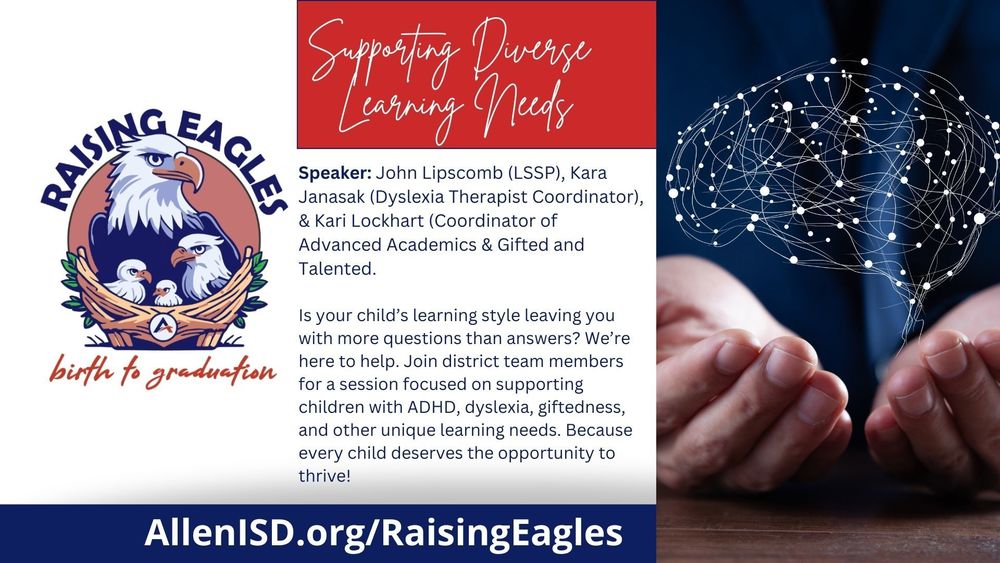Supporting Diverse Learning Needs
In today’s session, the focus is on understanding and supporting students with diverse learning needs. Three main groups are highlighted:
- Advanced learners (gifted and talented)
- Students with dyslexia
- Students with executive functioning challenges
Each of these groups has unique strengths, challenges, and needs. Importantly, many students experience multiple exceptionalities—for example, being both advanced and dyslexic, or gifted and struggling with ADHD. Recognizing the overlap helps us avoid putting students into silos and instead allows us to support the whole child.
Understanding Advanced Learners
Key Traits of Advanced Learners
Advanced learners are defined as students who outperform peers in one or more areas. These may include:
- Academic fields (math, science, reading, etc.)
- Fine arts (music, visual arts, theater)
- Leadership and creative problem-solving
It is crucial to remember that advanced learning is domain specific. A child may excel in math but struggle in reading or writing. Being advanced in one area does not mean they are advanced across the board.
Asynchronous Development
- A child may be able to think like an older student but still behave like their actual age.
- This can cause frustration (e.g., a child who imagines complex stories but lacks the fine motor skills to write them).
- Socially, advanced learners may feel isolated if peers do not share their interests.
Balancing Growth
- Avoid overloading them with advanced classes or extracurriculars. Instead, aim for a “just-right press” that challenges but does not overwhelm.
- Encourage practice of social skills in varied settings (school, home, church, community).
- Help them connect their learning to cultural and social identities.
Emotional Needs
- Helping them name and regulate emotions rather than just reacting.
- Practicing empathy by considering how others may feel in the same situation.
- Ensuring they have trusted adults and peers with whom they can share their thoughts safely.
Understanding Dyslexia
The Reading Brain
Reading is not a natural process for the human brain. It requires coordination of three major functions:
- Matching symbols (letters) to sounds.
- Blending sounds into words.
- Attaching meaning to those words.
For typical readers, this becomes automatic. For students with dyslexia, these connections are less efficient.
Dyslexia Explained
- Dyslexia is a brain-based learning difference that makes reading more effortful.
- Students with dyslexia often rely heavily on oral language centers of the brain rather than the regions typically used for reading.
- It can be remediated through dyslexia therapy, which retrains the brain to process language differently.
- Dyslexia persists across the lifespan, even after intervention. Students may still need extra processing time or accommodations.
Common Characteristics
- Difficulty reading words in isolation, especially irregular words (the, from, was).
- Struggles with decoding unfamiliar words.
- Guessing based on context or pictures.
- Reading that is slow, monotone, or lacking expression.
- Difficulty with spelling, especially in writing tasks.
Secondary Challenges
Because so much mental energy goes into decoding, students with dyslexia may struggle with:
- Reading comprehension.
- Fluency when reading aloud.
- Retaining and applying spelling skills in writing.
These challenges can lead to frustration, low self-esteem, or feelings of alienation from peers.
Understanding Executive Functioning Challenges
What Executive Functioning Is
Executive functioning refers to the mental processes that allow students to:
- Recognize a problem or task.
- Plan and organize how to approach it.
- Follow through and complete it.
- Manage time effectively.
How Difficulties Show Up
- Struggle to get started on tasks, especially if the work feels overwhelming or uninteresting.
- Show hyperfocus on topics they enjoy but avoid tasks that feel tedious.
- Delay work until the last minute, leading to stress and mistakes.
- Have difficulty perceiving time accurately and planning ahead.
- Experience frustration in group work or social interactions.
Emotional and Social Impact
- These students may feel inferior to peers if they notice differences in performance.
- They may mask their struggles by joking, being silly, or withdrawing socially.
- They can be sensitive to criticism and reluctant to share their true abilities or interests.
Overlap and Multiple Exceptionalities
Many students fall into more than one category:
- A gifted student with dyslexia may mask reading difficulties with advanced reasoning.
- A child with ADHD may be both highly creative and struggle with executive functioning.
- Overlapping challenges can make identification and support more complex.
Recognizing multiple exceptionalities allows parents and educators to use strengths-based approaches—leveraging areas of giftedness while supporting weaker areas.
Strategies for Parents and Educators
For Advanced Learners
- Recognize asynchronous development and adjust expectations accordingly.
- Provide “just-right” challenges instead of overwhelming acceleration.
- Encourage social connections with both like-minded peers and diverse peer groups.
- Support emotional development through explicit teaching of naming and regulating feelings.
For Students with Dyslexia
- Use structured, systematic reading interventions like dyslexia therapy.
- Provide extra processing time and accommodations in class.
- Support them emotionally by recognizing effort, not just outcomes.
- Encourage resilience by reminding them that dyslexia is a learning difference, not a lack of intelligence.
For Students with Executive Functioning Challenges
- Teach time management and task initiation strategies.
- Break larger tasks into smaller, manageable steps.
- Provide organizational supports (checklists, visual schedules, reminders).
- Encourage positive coping strategies for frustration and stress.

